Timothy Ferriss's Blog, page 126
November 2, 2010
How to E-mail Virtual Assistants (or Any Assistants): Proven Templates
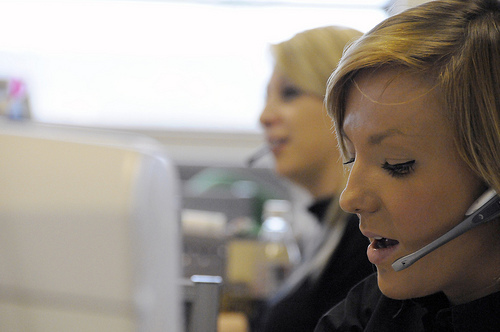
(Photo: Alan Clark Design)
[Tim's note: This is a guest post by Ramit Sethi on two of my favorite topics: one-shot-one-kill e-mail, and creating policies so you never repeat things.]
Enter Ramit
Why is communicating with virtual assistants is so hard?
When I first started using virtual assistants (VAs), I tested assistants from India, Bulgaria, and Israel. But I spent most of my time frustrated with the quality of their answers. How many times have your friends said, "Why don't you just have your VA do that?" and you sigh because you know: they should be able to it, but you just can't trust them to do it.
Right?
Other times, you email your assistant, saying, "Please book me a roundtrip flight from SFO to NYC from 3/19 – 3/22″ and you have to endure five back-and-forth emails before it's done… leading you to wonder why you didn't simply do it yourself.
No one wants more email. I always try for "one and done" emails, meaning when you send an email, it should get done the first time.
Fortunately, because I'm a huge weirdo about time management, I've spent over 65 hours optimizing my emails to VAs. Here are three examples of emails that get you answers in one round.
After reading the templates below, you'll be able to write a crisp one-and-done email that gets you results — the first time. I've used these techniques to recover those 65 hours in 3 months and cut back-and-forth emails with my VA by over 80%…
But first, let's start with a typical email that frustrates us all.
BAD email: Dinner reservations for a date
Imagine you sent this very common email to your VA:
Hi,
Please make reservations for dinner on Friday, 11/12, in midtown NYC. Time: 7 or 7:30pm. I like Indian and Thai food.
This email is doomed to failure…or at least 5 back-and-forth questions from your VA. Take a close look at the email — do you see all the implicit messages you unintentionally communicated in your email?
What is midtown NYC? What is your budget? What if there are no reservations at 7pm or 7:30pm? Do you have any food allergies? Most importantly, what is the single deliverable you expect from your email?
Using the scripts below, you'll see how important your level of specificity is when working with a VA, or any assistant. You'll see why spending three additional minutes crafting an effective email can save you 30 minutes in back-and-forth time. So, without further ado, here are 3 tested email scripts to use, along with an analysis of why they work.
* * *
Tested email script: Scheduling a doctor's appointment
Hello,
Please set up these appointments on Monday morning (12/17), when the doctors' offices open.
Please set up the following medical appointments for me:
1. A dental appointment (annual checkup)
2. An eye checkup (annual checkup)
WHERE TO LOOK
* Please look up doctors on http://www.bluecrossca.com — my doctor must accept my medical insurance (Blue Cross PPO — Lumenos)
* Then cross-reference the doctors' names on yelp.com to find doctors with positive reviews
* Call the doctors to see which doctors are available for checkups on the below dates
* Please confirm with the doctors that, as a member of Blue Cross Lumenos PPO, I will have 100% exam coverage (dental exam) and a $15 co-pay (vision exam)
WHEN I'M AVAILABLE
* December 17, 18, 19, 21, 27, 28
* 8am – 11am PST and 4pm-7pm PST
LOCATION
* Located near the ZIP code of XXXXX
Thank you,
-Ramit
WHY THIS WORKS:
- You start with a specific request — you want an appointment set on 12/17 — so there can be no confusion about the deliverable.
- You give step-by-step instructions, which the VA can refer to if they get lost in the details. These instructions take 5 minutes to write, but will invariably save you 5-10x that from email responses and switching costs.
- You provide ALL relevant information so your VA doesn't have to come back to you asking about your availability, ZIP code, etc. They have everything they need in front of them when booking availability.
* * *
Tested email script: Finding the best online savings account
Hi,
Please find me the best high-interest online savings account. I've heard good things about ING, Emigrant Direct, and HSBC Direct, so please begin with these — but please also search for other banks that meet my requirements.
REQUIREMENTS FOR THE BANK ACCOUNT
* No fees
* No minimum balances required (my average balance will be around $2,000)
PREFERRED ACCOUNT OPTIONS
Things I'd *like* to have, but are not required
* High interest rate, over 1%
* Attached online checking account
* Customer service by phone available
DELIVERABLE
Please create a table and rank my choices. You should only include banks that meet my requirements. Rank them by which of the "Things I'd Like To Have" are present.
Also, please include an extra column called "Other interesting facts" for each bank, where you list the most important reasons to choose that particular bank.
This should take no longer than 5 hours. Please check in after 2 hours and send me what you've got. I'll approve further work from there.
Thanks,
-Ramit
WHY THIS WORKS:
- You are explicit about the deliverable you want — a table with very specific cells. Too many people are vague about their deliverable because they don't take 3 minutes to decide what they really want. Then they're disappointed when they get another result. If you don't know what you want, how can your VA?
* * *
Tested email script: Planning air travel
Hi,
I'd like you to plan a trip from San Francisco to New York and provide me the 3 best options.
DATES
Depart: SFO to NYC on May 15 (arrive in time for 11am meeting)
Return: NYC to SFO on May 19th (late afternoon)
TIMES
From SF to NY: I need to be in midtown Manhattan for an 11am meeting on May 16th. Please factor in travel time by cab from the airport.
PREFERENCES
I prefer window seats. All flights must be direct.
I would like the lowest price with the following conditions (in order):
1. Arrive in time to reach my 11am meeting on the 16th (again, please factor in travel time from airport, baggage, etc)
2. Non-stop flight (required)
3. Window seat (preferred)
4. United or JetBlue preferred
Please send me the best three flights in a plaintext email.
Thanks,
-Ramit
WHY THIS WORKS
- The total energy output of the sun cannot compare to my hatred for travel planning. That's why you need to send explicit instructions to your VA to ensure that no details slip through the cracks, resulting in agonizing back-and-forth emails.
- In this email, you are specific about OUTCOMES when relevant — "arrive in time for 11am meeting" — so you've provided basic guidance VA can figure out the flight schedule on their own. However, for other areas where you don't particularly care, you can simply say "late afternoon" and let them figure it out.
- You should never write your preferences down twice. Instruct your VA to record your preferences so that each interaction makes life easier for you.
* * *
Key learnings:
- Eliminate one-off actions and create policies. It's ok to share your preferences once, but they should always be recorded. That way, if your VA gets hit by a bus (or you decide to work with someone else), you have a written record of your preferences. Examples: When are you available for meetings? Do you prefer aisle or window? What restaurants do you like going to for business meetings? See the ultimate example of a detailed process checklist here.
- Analyze why your emails aren't getting the responses you want. Take the last email to your VA that produced unsuccessful results. Now show it to your smartest friend. If they can't guess what the exact deliverable is, how can you expect your VA to?
- Specify the exact deliverable. If you don't want to get 10 flights in 10 separate PDFs (this has actually happened to me), ask for all the info in one plaintext email. A couple extra seconds saves a lot of frustration.
- Differentiate between requirements and preferences. Ask for an easy-to-read table so you can compare. Remember, point them to an example!
- Once you automate the details, you'll naturally get more general. Now that my assistant knows my preferences (and they're recorded online), I can just say, "Please schedule some time for Ben and me to get together" and she knows exactly where I like to have breakfast, my calendar availability, if I prefer aisle vs. window, etc. But getting to that stage took months of training and refinement.
* * *
About Ramit: Ramit Sethi is the author of the New York Times best-seller, I Will Teach You To Be Rich. He is the founder of iwillteachyoutoberich.com, a blog on personal finance and entrepreneurship where you can learn in-depth techniques on earning more money and automating your finances.
###
QOD: Do you have any e-mail rules that work well with VAs or employees? Or disaster stories and lessons learned? Please share in the comments!







October 30, 2010
20 Things I've Learned From Traveling Around the World for Three Years
Gary Arndt is the man behind Everything Everywhere, one of the most popular travel blogs in the world, and one of Time Magazine's "Top 25 Best Blogs of 2010." Since March 2007, Gary has been traveling around the globe, having visited more than 70 countries and territories, and gaining worldly wisdom in the process.
Today, I've asked him to share some of that wisdom.
Enter Gary
On March 13, 2007, I handed over the keys to my house, put my possessions in storage and headed out to travel around the world with nothing but a backpack, my laptop and a camera.
Three and a half years and 70 countries later, I've gotten the equivalent of a Ph.D in general knowledge about the people and places of Planet Earth.
Here are some of the things I've learned…
1) People are generally good.

Many people are afraid of the world beyond their door, yet the vast majority of humans are not thieves, murderers or rapists. They are people just like you and me who are trying to get by, to help their families and go about living their lives. There is no race, religion or nationality that is exempt from this rule. How they go about living their lives might be different, but their general goals are the same.
2) The media lies.
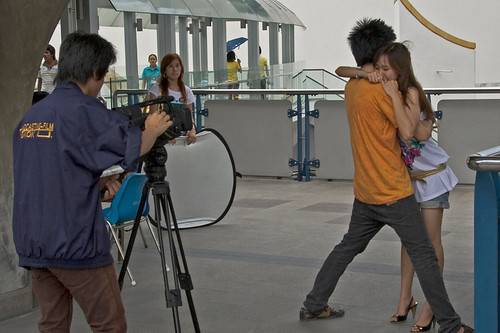
If you only learned about other countries from the news, you'd think the world was a horrible place. The media will always sensationalize and simplify a story. I was in East Timor when the assassination attempts on President José Ramos-Horta and Prime Minister Xanana Gusmão occurred in 2008. The stories in the news the next day were filed from Jakarta or Kuala Lumpur, not Dili. It was all secondhand news. I was in Bangkok during the political protests this year, but you'd never have any idea they were happening if you were not in the immediate area where the protests were taking place. The media makes us scared of the rest of the world, and we shouldn't be.
3) The world is boring.

If there isn't a natural disaster or an armed conflict, most places will never even be mentioned in the news. When is the last time you've heard Laos or Oman mentioned in a news story? What makes for good news are exceptional events, not ordinary events. Most of the world, just like your neighborhood, is pretty boring. It can be amazingly interesting, but to the locals, they just go about living their lives.
4) People don't hate Americans.

I haven't encountered a single case of anti-Americanism in the last three-and-a-half years. Not one. (And no, I don't tell people I am Canadian.) If anything, people are fascinated by Americans and want to know more about the US. This isn't to say they love our government or our policies, but they do not have an issue with Americans as people. Even in places you'd think would be very anti-American, such as the Middle East, I was welcomed by friendly people.
5) Americans aren't as ignorant as you might think.

There is a stereotype that Americans don't know much about the rest of the world. There is some truth to that, but it isn't as bad as you might believe. The reason this stereotype exists is because most other countries on Earth pay very close attention to American news and politics. Most people view our ignorance in terms of reciprocity: i.e. "I know about your country, why don't you know about mine?" The truth is, if you quizzed people about third-party countries other than the US, they are equally as ignorant. I confronted one German man about this, asking him who the Prime Minister of Japan was. He had no clue. The problem with America is that we suffer from the same problem as the rest of the world: an obsession with American news. The quality of news I read in other parts of the world is on par with what you will hear on NPR.
6) Americans don't travel.

This stereotype is true. Americans don't travel overseas as much as Brits, Dutch, Germans, Canadians or Scandinavians. There are some good reasons for this (big country, short vacation time) and bad ones (fear and ignorance). We don't have a gap year culture like they have in the UK and we don't tend to take vacations longer than a week. I can't think of a single place I visited where I met Americans in numbers anywhere close to our relative population.
7) The rest of the world isn't full of germs.

Many people travel with their own supply of water and an industrial vat of hand sanitizer. I can say in full honestly that I have never used hand sanitizer or gone out of my way to avoid contact with germs during my travels. It is true that in many places you can get nasty illnesses from drinking untreated water, but I don't think this means you have be a traveling Howard Hughes. Unless you have a particularly weak immune system or other illness, I wouldn't worry too much about local bugs.
8) You don't need a lot stuff.

Condensing my life down from a 3,000 sq/ft house to a backpack was a lesson in knowing what really matters. I found I could get by just fine without 97% of the things I had sitting around my home. Now, if I purchase something, I think long and hard about it because anything I buy I will have to physically carry around. Because I have fewer possessions, I am more likely to buy things of higher quality and durability.
9) Traveling doesn't have to be expensive.

Yes, if you insist on staying in five-star hotels and luxury resorts, travel can be very expensive. However, it is possible to visit many parts of the world and only spend $10-30 per day. In addition to traveling cheap, you can also earn money on the road teaching English or working on an organic farm. I've met many people who have been able to travel on a little more than $1,000/month. I met one man from the Ukraine who spent a month in Egypt on $300.
10) Culture matters.

Many of our ideas for rescuing other countries all depend on them having similar incentives, values and attitudes as people in the West. This is not always true. I am reminded of when I walked past a Burger King in Hong Kong that was full of flowers. It looked like someone was having a funeral at the restaurant. It turned out to be people sending flowers in celebration of their grand opening. Opening a business was a reason to celebrate. In Samoa, I had a discussion with a taxi driver about why there were so few businesses of any type on the island of Savai'i. He told me that 90% of what he made had to go to his village. He had no problem helping his village, but they took so much that there was little incentive to work. Today, the majority of the GDP of Samoa consists of remittances sent back from the US or New Zealand. It is hard to make aid policies work when the culture isn't in harmony with the aid donors' expectations.
11) Culture changes.

Many people go overseas expecting to have an "authentic" experience, which really means they want to confirm some stereotype they have in their mind of happy people living in huts and villages. They are often disappointed to find urban people with technology. Visiting a different place doesn't mean visiting a different time. It's the 21st Century, and most people live in it. They are as likely to wear traditional clothes as Americans are to wear stove top hats like Abraham Lincoln. Cultures have always changed as new ideas, religions, technologies sprang up and different cultures mingled and traded with each other. Today is no different.
12) Everyone is proud of where they are from.

When you meet someone local in another country, most people will be quick to tell you something about their city/province/country that they are proud of. Pride and patriotism seem to be universal values. I remember trying to cross the street once in Palau, one of the smallest countries in the world, and a high school kid came up to me and said, "This is how we cross the street in PALAU!" Even crossing the street became an act to tell me about his pride for his country. People involved in making foreign policy should be very aware of this.
13) America and Canada share a common culture.

This may irk Canadians, but we really do share a common North American culture. If you meet someone overseas, it is almost impossible to tell if they are American or Canadian unless they have a particularly strong accent, or they pronounce the letter "z." It is easier to tell where in England someone is from than it is to tell if someone is from Denver or Toronto. We would probably be better off referring to a "North American" culture than an "American" culture. What differences do exist (Quebec being the exception) are more like differences between states and regions of a similar country.
14) Most people have a deep desire to travel around the world.

Not shocking, but every day I meet people who are fascinated by what I do and how I live. The desire to travel is there, but fears and excuses usually prevent people from doing it. I understand that few people can drop what they are doing and travel around the world for three years, but traveling overseas for even a few months is within the realm of possibility for many people at some point in their lives. Even on an island in the middle of the Pacific, people who would probably never leave their home island talked to me of wishing they could see New York or London for themselves one day. I think the desire to explore and see new things is fundamental to the human experience.
15) You can find the internet almost everywhere.

I have been surprised at where I've found internet access. I've seen remote villages in the Solomon Islands with a packet radio link to another island for their internet access. I've been at an internet cafe in the Marshall Islands that accessed the web via a geosynchronous satellite. I've seen lodges in the rainforest of Borneo hooked up to the web. I once counted 27 open wifi signals in Taipei on a rooftop. We truly live in a wired world.
16) In developing countries, government is usually the problem.
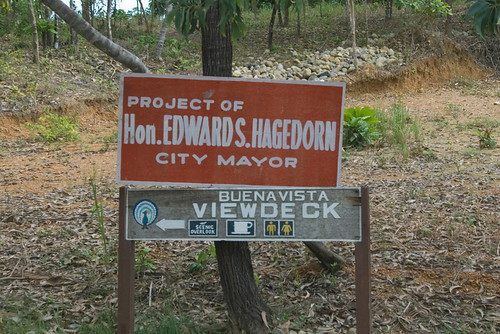
I have been shocked at the level of corruption that exists in most developing countries. Even if it is technically a democracy, most nations are run by and for the benefit of the elites that control the institutions of power. Political killings, bribery, extortion and kickbacks are the norm in many places. There is little difference between the Mafia and the governments in some countries I've visited. The corruption in the Philippines was especially surprising. It isn't just the people at the top who are corrupt. I've seen cops shake people down on the street for money, cigarettes or booze.
17) English is becoming universal.
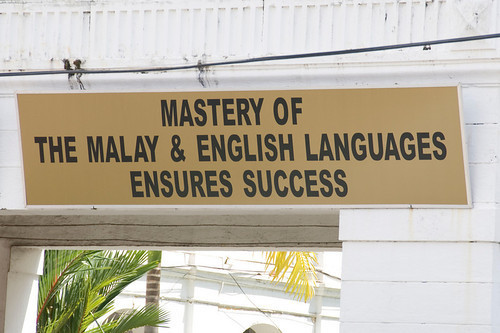
I estimated that there were at least 35 native languages I would have had to have learned if I wanted to speak with locals in their own tongue. That does not include all the languages found in Papua New Guinea or Vanuatu or regional dialects. It is not possible for humans to learn that many languages. English has become the de facto second language for the world. We are almost to a point where there are only two languages you need to know: whatever your parents speak… and English. English has become so popular it has achieved an escape velocity outside of the control of the US and UK. Countries like Nigeria and India use it as a unifying language in their polyglot nations. Other countries in the Pacific do all their schooling in English because the market just isn't there to translate textbooks into Samoan or Tongan.
18) Modernization is not Westernization.
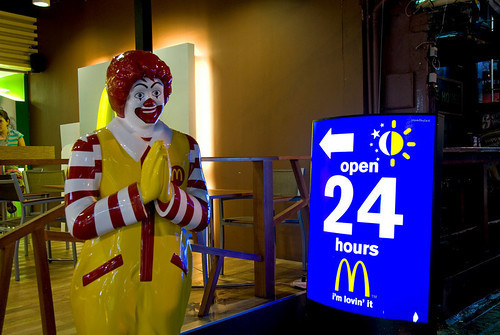
Just because people use electricity and have running water doesn't mean they are abandoning their culture to embrace western values. Technology and culture are totally different. Japan and South Korea are thoroughly modern countries, but are also thoroughly Asian. Modernization will certainly change a culture (see #11 above), but that doesn't mean they are trying to mimic the West.
19) We view other nations by a different set of criteria than we view ourselves.

On the left, people who struggle the hardest for social change would decry changes in other countries that they view as a result of globalization. On the right, people who want to bring democracy to other countries would be up in arms at the suggestion that another country try to institute change in the US. In both cases, other nations are viewed by a different set of rules than we view ourselves. I don't think most people around the world want the help or pity of the West. At best, they would like us to do no harm.
20) Everyone should travel.

At some point in your life, whether it is after college or when you retire, everyone should take an extended trip outside of their own country. The only way to really have a sense of how the world works is to see it yourself.
###
You can subscribe to Gary's blog, or follow him on Facebook.
###
Odds and Ends:
Vegetarians vs. Meat-Eaters:
My recent guest post from Robb Wolf created something of a religious war between meat-eaters and vegetarians. The comments — 816 and counting — got ugly fast.
Whether you're a die-hard meat-eater or plant-eater, I highly recommend watching the below video of Jonathan Safran Foer, author of Eating Animals. He is a brilliant writer, and we were actually in the same class at Princeton. Take some time or let it run in the background as audio — the following discussion is worth it:
October 28, 2010
How Tim Ferriss Makes Money (and Other Things)
Two days ago, I saw the following tweet:
@tferriss so self-promo by referring to yourself in the third person can work. It's ironic given the content of this http://su.pr/3BZbFL
This was in response to my tweet, which read:
Inc. Magazine – Tim Ferriss on the Pitfalls of Personal Branding: http://su.pr/3BZbFL
Ironic? Not really. Let me pose a question: what does a follower need to do if I write "My take on the Pitfalls of…"?
Before they retweet it (even with "RT @tferriss"), many will feel compelled to rewrite "My" as "Tim Ferriss's" or "@tferriss's". Editing means fewer retweets. The same logic applies to some blog post titles, like this one, both for ease-of-sharing and SEO…
I have reasons for most of what I do.
David Siteman Garland dug into some of those reasons recently in an interview on Rise to the Top. He describes the content:
In this interview, I pick Tim's brain on:
The shift from The 4-Hour Workweek to The 4-Hour Body. Why did he decide to go this route from a business, marketing, and personal perspective?
The business behind his books.
How has his perspective on marketing and promoting changed since the first book became an international phenomenon?
How he spent less than $10,000 and successfully took the 4-Hour Workweek to the New York Times Best Seller List.
The best approach for forming genuine relationships with bloggers.
The difference between hard selling and soft selling (and what it means for your brand).
How Tim Ferriss makes money.
An alternative to the typical "author model" of write a book and then speak/consult.
His advice for creative entrepreneurs like all of us.
Plus, much, much, much more.
###
Odds and Ends: Advertising Competition
Wow! More than 500 submissions, and there are a lot of good ads. It will take me and my small army a while to get through them all, so please be patient! Some incredible gems were produced and, more important to me, the creativity was outstanding. More coming soon, and thank you for the awesome performance.







October 19, 2010
The Experimental Life: An Introduction to Michel de Montaigne

Que sais je? (Photo: BLT)
This is a guest post by Ryan Holiday.
At age 21, Ryan became Director of Marketing at American Apparel, the largest clothing manufacturer in the United States. He gets more done than five average people combined, and practical philosophies help to make it possible. His previous post, entitled Stoicism 101: A Practical Guide for Entrepreneurs, has nearly 300 comments.
In this post, Ryan introduces another of his guiding mentors, the fascinating (and practical) Michel de Montaigne…
Enter Ryan Holiday
In late 1569, Michel de Montaigne was given up as dead after being flung from a galloping horse.
As his friends carried his limp and bloodied body home, he watched life slip away from his physical self, not traumatically but almost flimsily, like some dancing spirit on the "tip of his lips," and then return. This sublime experience marked the moment Montaigne began a uniquely playful relationship with his existence and was a sense clarity and euphoria about life that he carried with him from that point forwards. Shortly thereafter he took a bold step, retiring from a promising public career—retired to himself, so to speak—and made self-study his official occupation.
Maybe you don't know anything about this man, Montaigne; perhaps you know him as the bane of your high school existence for inventing the word "essay." What I'd like to do in this piece is tell you a bit more about him and hopefully remove him from the realm of people-from-history-you-don't-care-about and place him in his proper context: as our greatest philosopher of life. And Montaigne was a philosopher in the truest sense; he studied life and how we can wring all that we can from the short bit of time each of us is given. Philosophy can seem boring—truthfully, most of it is—but Montaigne is not only incredibly accessible; just a brush with his brand of thinking can change our lives.
Montaigne's famous collection of essays ruminates on diverse topics, covering everything from South American cannibalism and animal cognition to Seneca and death. The topics he chose to write about were just jumping-off points, exercises to practice thinking and to discover thoughts he didn't know that he had. His brand of ceaseless curiosity and self-reflection is something we can learn much from, starting by internalizing his biggest breakthrough.
The Big Idea: Ourselves As A Job
It is easy to become detached from what we do, especially if what we do is predatory, meaningless or boring.
Tim has written extensively about extracting yourself from the mindset of obsessing over your jobs, but the reality is that he and Montaigne transcended this identity crisis by becoming the subject and the end of their own labors. They wake up each day and work on themselves. Seems unrealistic for most of us, doesn't it? How would we make a living?
Clay Shirky's theory of cognitive surpluses looks at the fact that the average American spends 20 hours a week watching TV, or about as much as a part-time job. This time, he says, could be better allocated for great collaborative projects, like Wikipedia. But what if we break out of the paradigm of "giving away" our time? In the early 1570s, Montaigne converted a tower on his property into a personal library where he showed up and worked (thinking) part of each and every day—just like a farmer or a banker or scientist would.
What we could accomplish personally if, like Montaigne, we spent those 20 hours (whether usually spent on news sites, games, or Lost episodes) examining ourselves and learning what makes us tick?
The convergence of self-improvement and his occupation is best shown in an anecdote between Montaigne and King Henry III of France. After Montaigne had published his essays to great acclaim, the King remarked to him that he liked them very much. Montaigne replied, "Then your majesty must like me." Later, he wrote, "I have achieved what I wanted: everyone recognizes me in my book and my book in me." We would be proud if we could say the same.
3 Things We Can Learn From Montaigne
1) Self-Experimentation and Observation
The most striking feature of Montaigne's essays is his observations. They range from incisive to funny to world-altering. One of his most famous essays is a bit of all three. As he played with his cat one day, he asked himself, who was there to amuse who? In other words, which one of them was really the pet?
This is his penchant for finding perspective in the strangest of places and it was something he had much practice at. Montaigne wrote that "having myself since boyhood to see my life reflected in other people's…I study [them] for what I should avoid or what I should imitate." It didn't stop at observation; he was constantly experimenting on himself trying to figure out what he liked or didn't like. It shouldn't come as a surprise that in French his word "essay" also means "trial." And these weren't idle diversions. He practiced this art to learn how to live.
Montaigne once used the analogy of a man with a bow and arrow to illustrate the importance of meditation and analysis. You have to know what you're aiming for before it is even worth bothering with the process of preparing the bow, nocking the arrow and letting go. Our projects, he said, "go astray because they are not addressed to a target." The idea is that an intimate knowledge of ourselves makes it possible (and easier!) to know what we need to do on a daily basis. He advised us to meditate on our lives in general, in order to properly arrange our day to day actions.
2) Keep a Commonplace Book
Montaigne kept what was known as a "commonplace book" or a hand-written compilation of sayings, maxims and quotations from literature and history that he felt were important. His earliest essays were little more than compilations of these thoughts.
The idea was that over a lifetime of reading, one can cumulatively amass a fantastic resource of wisdom—wisdom that can be accessed in times of crisis, depression or joy. This doesn't mean we treat reading like a high school history class where rote memorization is important. Montaigne once teased the writer Erasmus, who was known for his dedication to reading scholarly works, by asking with heavy sarcasm "Do you think he is searching in his books for a way to become better, happier, or wiser?" In Montaigne's mind, if he wasn't, it was all a waste. A commonplace book is a way to keep our learning priorities in order. It motivates us to look for and keep only the things we can use.
3) Que sais je? (Don't take yourself too seriously)
You'd think that Montaigne, as he grew older and more practiced, would have become more certain, more sure of himself. In fact, the more he studied, the more frequently he found himself asking his most famous question: "Que sais je?" or "What do I know?" The answer to the rhetorical question is, "Nothing." Montaigne practiced the Skeptic's notion of questioning what he "knew" and deliberately threw his assumptions into doubt.
By building up tolerance to uncertainty, he not only better suited himself for life in chaotic civil war-era France but primed his mind for tackling the big questions that don't have easy answers. For a second, consider of all our major public thinkers today. They do the opposite, constantly telling how sure they are of their beliefs and criticizing their "opponents" for changing their minds. Changing your mind is a good thing, Montaigne would say. It means you've resisted the impulse to think you're infallible. He wrote that as part of his profession of getting to know himself he found such "boundless depths and variety that [his] apprenticeship bears no other fruit than to make me know much there remains to learn." If only we could internalize that attitude—instead of feeling cocky when we learn something, acknowledge that it really just taught us how much more we need to learn.
Conclusion
Don't fool yourself with excuses about being too busy to do any of this. During the course of writing his essays, Montaigne served two terms as mayor, traveled internationally as a dignitary and was a confidante of the King. He never let any of that stop him from his real job:
"The world always looks straights ahead; as for me, I turn my gaze inward, I fix it there and keep it busy. Everyone looks in front of him: as for me, I look inside me: I have no business but with myself; I continually observe myself, I take stock of myself, I taste myself. Others…they always go forward; as for me, I roll about in myself."
Montaigne is a special philosophical figure because he didn't subscribe to one school of thought. Instead, he subscribed to all of them. He was willing to take bits and pieces from anywhere, as long as they had practical application to his life. This was why he tirelessly observed and experimented, jotted down useful notes in his commonplace and repeatedly asked "am I sure about this?"
He worked on and for himself—a true free agent—and the three tools above were how he did it.
###
Further Reading & Tips:
How to Life: A Life of Montaigne in One Question and Twenty Attempts at an Answer by Sarah Bakewell (AMAZING)
Montaigne, philosopher of life (Bakewell's 7 part series on Montaigne in The Guardian)
The Essays: A Selection by Montaigne (I prefer Penguin's translation. Favorite essay: On Experience)
Montaigne by Peter Burke (a short but good biography)
Philosophy As A Way of Life: Spiritual Exercises from Socrates to Foucault by Pierre Hadot (The best resource on practical philosophy, period.)







October 13, 2010
Have a Good Eye for Ads? Try the (Lucrative) 4-Hour Body Experiment…
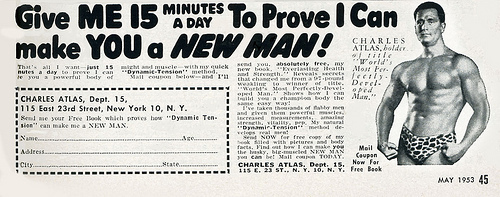
(Image: X-ray Delta One)
Some of you have no doubt noticed that I've been experimenting with advertising for several months, whether at the top-right, through skyscrapers in the sidebar, or even under posts on a rare occasion.
It's been a learning experience. Sometimes, it doesn't turn out totally awesome. Case in point:

I think I can do better. I also have an incentive: the new book, The 4-Hour Body. But then I realized, I think you all can be FAR better. Collectively, I think you can be AWESOME.
So, I'm running a competition. Here are the prizes:
1) The fantastic North Face Prophet 65 Trekking Pack (Retail: $319)
2) A round-trip anywhere in the world Star Alliance airlines fly (or $1,000 cash)
3) All 4-Hour Body revenue via ads on my site for two weeks (potentially every post ever written), using your Amazon affiliate code. Untold riches.
4) Fame, public credit, and eternal glory for being the best.
The deadline for the competition is next Wednesday, 10/20, at 10pm PST. It pays to get started as soon as possible. Here's the idea…
The Basics
1) Create an ad or a few ads (can be text only) for The 4-Hour Body.
2) Optional but encouraged: Test your ads
3) Post your best four or fewer ads as pics on my Facebook fan page. If you did testing, indicate what you did in the pic description or in the pic comments. Deadline for submissions is next Wednesday, 10/20, at 10pm PST.
4) Of those submitted, I will test "a bunch" (technical term) of the best on this blog using split-testing. I've heavily biased towards those that have been tested. I'm also biased towards early submissions, so don't worry too much about someone copying you.
5) I'll do a follow-up post describing the process, real-world results, and top 3-5 performers for each ad type. I am happy to link to your site or company site if you are among the top performers. This is valuable.
6) If your ads perform the best, not only will you get glory and recognition for being the best, I'll also use your ads (subject to my approval) on the blog. The kicker: for the first two weeks, I will use your Amazon affiliate code, which means you get all of the affiliate revenue.
The Details
1) Create one or more ads for The 4-Hour Body.
The sizes are 300 x 250 (seen at the top right of this blog) and 468 x 60 (which would go at the bottom of every blog post on the site). These sizes can be seen here. Text-only ads are absolutely allowed, but they could only appear at the bottom of posts.
Create one or both sizes (or text). Do so from scratch and/or using the book cover, elements from the book cover, any of my Flickr photos without a copyright attribution in the description, or any of my YouTube videos without someone else's copyrighted material in them. Of course, feel free to use any other materials or images you own or are legally permitted to use (including stock images that are royalty-free or licensed).
In other words, text, display images, and video are all OK, but they need to be static unless the reader clicks on something.
Keep them R-rated or less, and use your common sense (nothing racist, etc.).
2) Optional but encouraged: Test your ads, even just a little.
If possible, test your ads on your site or through an ad network (Google Adwords, Facebook, wherever) to determine which have the highest click-through and (ideally) conversion. Please link to The 4-Hour Body on Amazon if possible, and that's my request if using any book elements or my materials above. Of course, feel free to use your own affiliate code.
How do you test "conversion"? Look at actual book sales. Use your Amazon affiliate ID (get one here, if needed) and see which ads actually convert to sales. That dancing gorilla or Swedish swimsuit model might get the most clicks, but what actually moves books?
If you can prove conversions another way, go for it.
3) Post your best four or fewer ads as pics on my Facebook fan page.
4) I will test the best of these on this blog using split-testing
5) I'll do a follow-up post describing the process, results, and top 3-5 performers for each type, linking to their sites as credit.
6) If your ads perform the best, you will all the goods and recognition described at the beginning of this post, including all Amazon affiliate revenue for your ads throughout my entire site for two weeks.
The Deadline and Fine Print
The deadline for ad submissions on this Facebook page is next Wednesday, 10/20, at 10pm PST.
This competition is void where prohibited, blah, blah, blah. If you'd be doing something illegal, in bad taste, or that would cause your ancestors to cry, you are not allowed to participate. Es tut mir Leid.
October 8, 2010
How to Buy a Round-the-World Plane Ticket (That Kicks Ass)
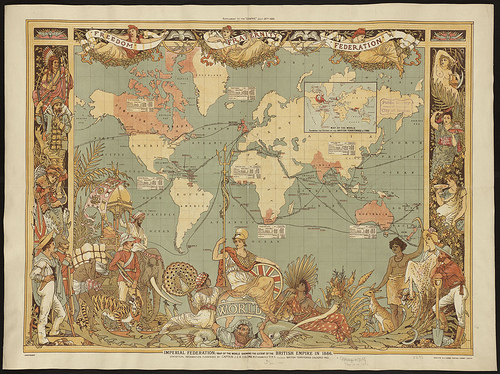
(Photo: Norman B. Leventhal Map Center)
Chris Guillebeau travels the world and writes for a small army of remarkable people at The Art of Non-Conformity blog. He is a master of clever air travel (among other things), and this is a guest post on perfecting one of the rare gems that can truly change your life: Round-the-World (RTW) tickets.
Enter Chris…
——
To outsiders, buying a Round-the-World plane ticket is a mysterious process. How does it work? Where can you go? How much does it cost? Unlike buying a simple one-way or round-trip ticket, you don't just go to Kayak and click the "Everywhere" tab. (You don't have to look – there is no such thing.)
Over the past three years I've spent at least 60 hours, probably more by now, learning the ins and outs of Round-the-World travel. In this post, I'll explain a) why Round-the-World tickets can be an excellent value even if you're not trying to visit every country in the world like I am, b) how to plan your trip, c) how much it costs, d) 7 bonus tips on optimization.
The Time Investment
Planning and shopping for a Round-the-World (RTW) ticket is a labor-intensive process. If you don't enjoy planning a short trip, you'll find it much more difficult to plan a complicated RTW itinerary. Personally, I enjoy the process, but then again, I also like airports and flying.
Also, before you can actually buy a Round-the-World ticket, you need to be willing to do all these things:
- Spend a couple of hours of initial reading
- Spend at least a couple of hours planning and optimizing
- Place an initial phone call (usually at least 30 minutes) setting up the trip
- Place a secondary phone call a few days later after the ticket has been validated
- Make any adjustments due to lack of availability or invalid routings
- Arrange to pay for the ticket with a local office in the originating country (this step may be optional, depending on how you structure the trip)
Those are the minimum "time costs" for getting a Round-the-World trip set up well. Keep in mind that you can use a RTW ticket for up to a full year, so taking the time to do it well is important. The value I receive from my tickets well exceeds the planning time it requires, but as noted, the practice is not for everyone.
Good Reasons to Use Round-the-World Tickets
If you're willing and able to invest your time, the benefits you'll receive from using these kinds of tickets are significant.
– Tremendous Value. RTW tickets are not especially cheap (see below for a cost outline), but a well-optimized ticket can provide value far beyond what it would cost to otherwise buy a series of one-way tickets.
– Freedom and Flexibility. I change my flights all the time, and with RTW tickets, it's easy. Date and time changes are free, and you can make changes anytime — from far in advance all the way up to the day of departure. For a fee, you can even reroute the entire ticket after you've begun the trip.
– One Full Year. You get an entire year to use the ticket, which means that you can have up to 365 days of going from place to place, or you can get even more creative like I do and spread out the ticket into a series of shorter trips by finding a way to come home in the middle.
– Miles and Elite Status. I carry the highest-level elite status in two airlines thanks to my RTW travel. I also earned more than 200,000 Frequent Flyer miles with American Airlines in 2009, thanks to double-mileage bonuses and a lot of time in the air. With the status, I'm now first on the upgrade list, can hang out in nice airline lounges around the world, and don't have to wait on hold when I call the airline.
– Creative Opportunities to Travel. You can get to a lot of places in the world with simple round-trip tickets, but because RTW tickets are priced by mileage or by segment, you can visit destinations that are otherwise cost-prohibitive when using regular tickets.
What to Do First
If you know this is what you want to do, or even if you're just curious and want to create a sample itinerary, start by downloading these two free tools:
Star Alliance Mileage Calculator
OneWorld Timetable and Itinerary Planner
Spend some time getting to understand how they work. You'll also want to check out the OneWorld interactive route map and the Star Alliance Downloadable Timetables to better understand where you can go.
WARNING: This software can be hazardous to your productivity. Many a workday has been lost at World Domination HQ because of the attraction of these tools. Don't say I didn't warn you.
Next, you need to answer a few questions: where do you want to go? What's the goal of your trip? How much time do you have?
Star Alliance versus OneWorld
Each airline alliance has its own rules for how the ticket works. The one from Star Alliance is mileage based, meaning you'll have a limit of 26,000, 29,000, 34,000 or 39,000 miles on your ticket. The trick here is to optimize your route to where you are just below one of the tiers, getting the best possible value without spending more money than necessary. (A friend of mine got his itinerary to 33,998 miles, which I thought was pretty good.)
The OneWorld product is segment-based, meaning that a flight from Hong Kong to New York (11 hours) is the same as a flight from Chicago to Dallas (less than 2 hours). You can have up to 16 segments on the trip, and naturally, you'll want to optimize for flights that would be fairly expensive when purchasing a standard ticket.
I get even more creative with my plans, involving overland trips, return journeys to my home base in Portland, Oregon, and having multiple tickets open at one time. You don't have to be that imaginative; I've been doing this for a while. Even a fairly basic RTW ticket can yield significant benefits and travel opportunities you wouldn't otherwise have.
How Much Does it Cost?
The cost for either product mentioned above varies from $3,000 to $10,000 – largely dependent on travel class, mileage tier (Star Alliance only) and where you begin the trip from. My tickets over the past few years have been almost exactly $5,000 each. I purchased two of them last year, and I'm trying to set up a new one for early 2011.
$3,000+ is a lot of money, of course, but when you consider all the flights you can take, the price per segment goes way down. My price-per-segment is about $300 (now $400), and this includes many long-haul flights that would otherwise cost thousands of dollars.
For example, here is an itinerary I used for my first OneWorld RTW ticket:
NRT-HKG-LAX-SJO-LAX-ORD-SEA-JFK-SCL-IPC-SCL-EZE-ORD-AMM-TUN-AMM-FCO-HKG-NRT
This 18-segment itinerary, purchased before the limit dropped to 16, included:
- A trip to Easter Island, usually quite pricey since there's only one easy way to get there (through South America on LAN Chile or LAN Peru)
- A visit to North Africa and the Middle East, another pricey region
- A quick trip down to Costa Rica, which provided more miles than most U.S. flights would have offered
- A return to Seattle (in between Asia and South America) where I could stop and break up the trip for a while
- Base mileage of 54,894 miles, which when added to a number of bonuses I received, came up to nearly 100,000 total award miles
- When combined with overland trips on location (to Uruguay from Argentina, to San Marino from Rome, etc.) the chance to visit 10 countries from this one ticket
Geographic Advantage
You can get the best deal on Round-the-World tickets by departing from (and eventually returning to) a few specific countries where the price is much lower than leaving from North America or Europe. Which countries? Well, they change from time to time, but as of the time I'm writing this (October 2010), the best places are South Korea, South Africa, Mauritius, Sri Lanka, and Indonesia.
Yes, it takes some work to get there. If those are too far, Japan is also a decent choice, where I began that first RTW trip. And of course, you don't have to begin from a faraway place. If you don't mind paying a fair amount more (usually $2000-4000), you can begin from North America or wherever you live. To get the estimate cost for your trip based on travel class, number of miles (Star Alliance only) and departing country, complete a mock itinerary on either of the two online fare calculators. You can then switch the departing country around to see how it compares with other options.
Reservations
Finally, when you actually get ready to buy your ticket, you'll need to do two steps that may or may not be easy:
1. Create your itinerary. Until very recently, RTW itineraries usually had to be phoned in to an airline desk to set up manually. Thankfully, you can now set up a RTW itinerary online most of the time. In some cases there may be quirks in the itinerary that are allowed but not recognized by the online system, in which case you'll need to phone it in. To at least get started online, use these links:
If phoning it in, plan for the process to take at least half an hour once you get someone on the phone. It is much easier with OneWorld, since they have a dedicated RTW desk operated by American Airlines. With Star Alliance airlines, you may need to talk to several people before you find someone who knows how to create the itinerary in their system.
2. Find a way to pay for the ticket. I don't mean, "Save the money," although that of course is important too. I mean, "Find out how to physically pay for the ticket." This is easy if you are buying online or are already in the country you are departing from. If you live in the U.S. and want to depart from the U.S., for example, then you can pay for the ticket after it is "rated" by the airline desk. In this case, you wait a few days after first phoning in the itinerary, and then call back to pay with your credit card.
If you're beginning the trip in another country, it's a bit more complicated. In some cases, you'll need to phone the airline's office in the country. I used Skype to do this last year with AA Japan. Some airline reps in overseas locations are more helpful than others, and of course there can be a language barrier as well. A certain amount of persistence may be required, but you can also get lucky and have it done in 20 minutes with the right rep on the right day.
7 Tips to Help Plan Your Trip
1. If using OneWorld, here is a very helpful validator that can help check your itinerary before going to book. It can also suggest alternative cities for more mileage.
2. Due to a quirk in airline rules, some countries in North Africa are defined as being in Europe for the purposes of ticket validation. You can visit Morocco, Tunisia, Algeria, or even Sudan as part of the "European" portion of your trip.
3. Similarly, "North America" includes the Caribbean and parts of Central America. You can visit Panama, Costa Rica, El Salvador, Belize, Honduras, Haiti, the Dominican Republic, and several other stops during the North America portion.
4. If you don't know how you'll use certain segments, you can book them as "open" (so that the ticket can be issued) and add the dates later. You won't have to pay a change fee when you add the dates.
5. London's Heathrow (LHR) airport has very high taxes. If you can avoid it, or use it for transit only (less than 24 hours), you'll save quite a bit.
6. Most of the time, you won't want to use Frequent Flyer miles for a Round-the-World trip. Instead, you can get better value by redeeming miles for two round-trip tickets between continents. You'll then effectively have two RTWs for the price of one.
7. People often ask which airline program is best for them. It all depends on where you travel and what your goals are, but if forced to make a recommendation I usually send people to the AAdvantage program from American Airlines. Even if you don't live in the U.S., AA's program can help you. If you prefer Star Alliance, then most programs are equal.
8. Use at least part of your RTW ticket to visit destinations that are otherwise prohibitively expensive to purchase. Among others, I've gone to Kurdistan (Iraq), Pakistan, Burma, and Uganda as part of my RTW tickets. Each of these places is fairly expensive to travel to on a simpler ticket.
What to Watch Out for
I spent a couple hours writing out this information because I frequently get questions about booking RTW tickets, and while I try to respond to each request individually, I also like to send people to an online resource for more reading. When I went to look for more resources on Google, the majority of the first-page results for "Round-the-World plane ticket" and related terms contained inaccurate information from a biased source. How do you know the sources are biased? Because many of them lead visitors to book through an online travel agency where they receive commission.
When it comes to Round-the-World tickets, this is one time when it's actually better to buy from the airlines instead of a travel agent or other reseller. Since these tickets aren't usually commissionable (the travel agent doesn't get paid much to issue them), some agents will play dumb or try to steer you towards an alternative kind of ticket.
If that's what you want, of course, there's nothing unethical about it. There are some situations when a DIY trip will be better, but in many other situations the alliance tickets are the best bet. I tend to think most people want the best kind of ticket for the lowest possible price, and once you understand how the process works, the OneWorld and Star Alliance products can be great options.
I hope to see you somewhere on a future Round-the-World stop. I'll be in the lounge with my MacBook, probably responding to emails or planning a future trip.
###
Follow Chris' live updates from every country in the world on Twitter. Be sure to also check out his new book, The Art of Non-Conformity, for which he's currently visiting 50 states and 10 provinces. And I thought I traveled a lot!
QOD: What is the greatest travel deal (airfare, housing, recreation, or otherwise) that you ever chanced into or made happen?







October 5, 2010
Zen, Tea, and the Art of Life Management
This is a Zen-focused panel featuring Leo Babauta of Zen Habits, Susan O'Connell of San Francisco Zen Center, and yours truly.
The content starts at tea, moves to daily rituals, and spans many topics related to good living and productive living, which are not always the same thing. It also answers the question: is Tim Ferriss really as organized as you think he is? Short answer: no, and that should make you happy.
QOD: Do you have a helpful morning or pre-bed ritual? If so, please share in the comments.
###
Odds and Ends: Signed 4HB Copies
Thank you all so much for the amazing response to The 4-Hour Body announcement! Just a quick note, as a few people have asked: the only signed copies were those sold via BN.com, which are now sold-out. None of the Amazon copies are signed at this point. If that means you need to cancel orders, I completely understand and apologize for any confusion. Thank you again!







October 4, 2010
Random Show Episode 13 – Kevin and Tim on Trampolines, Apps, and A**holes
12? 13? Our ability to remember episode numbers: negligible.
Kevin's ability to kick my ass on trampolines: priceless. (Kevin left out the fact that he grew up with one. Trixy.)
Join us at House of Air, which features dozens of trampolines at different angles, including the "Matrix" room. There is a fair amount of cursing in the video. If you have sensitive ears: earmuffs…
Enjoy.
Some viewers might have trouble viewing this with iPhones/iPads. Bonus points to anyone who figures out the reason(s).
###
Odds and Ends: Sonos Winner!
The winner of the Sonos ZonePlayer and Klipsch speakers giveaway is Allen of Unfubared. This was a comment/tips competition on the post How to Travel 12 Countries with No Baggage Whatsoever. Congrats, Allen, and thanks for the great travel recommendations that cinched the deal. Keep an eye on your inbox.
There were dozens of fantastic comments, and it was very hard to choose just one, hence the delay in posting the winner. Honorable mentions also go to Mike Burngasser (survivalist approach), Heather Waibel (light-weight packing for women) or Craig Tobin (traveling light with kids in tow).
October 1, 2010
Tonight: 400 Free Tickets to "Waiting for Superman"
To thank you all for making the last three years of life so amazing , I'd like to take you to a movie. Tonight.
I'm giving away 400 tickets to "Waiting for Superman" in San Francisco at 7:10pm (the SF premiere!), which opens tonight in several cities nationwide. If you get one of the 400, please print out your Eventbrite receipt and come to the theater around 6:30pm to get your real ticket. I'll see you there and will also be giving DonorsChoose gift cards to every attendee.
The iconic Paul Graham has called this movie "probably the most memorable movie I've ever seen."
I cannot imagine a more important film for Americans to watch… and it's a fun watch. Truly a must-see. To keep it short and sweet: please make a point to see this film. It will change you.
See you at the movies, whether in person or in spirit.
Spread the word!
Other ways to help:
1) Have a birthday or other celebration coming up? Consider doing this, as I did. Wildly successful.
2) Other options for parents and you… yep, that means you. As much the 25-year old male programmer as the mom with three kids. See the film and then take just five minutes here.
Have a wonderful weekend, all. Much love to you and yours.







September 29, 2010
The New Book Unveiled: The 4-Hour Body

Data crunching back to age 18. Three years of organizing self-experiments around the world. Thousands of blood tests and hundreds of case studies.
My new book is finally here: The 4-Hour Body.
I could not be happier with the end product. Truly, I am ecstatic.
If you want a minimalist guide to hacking the human body, this is it.
In each chapter (more than 50 topics total), I test everything on myself so you don't have to. In "Reversing 'Permanent' Injuries," for example, I tested the moderate options like over-the-counter supplementation and Feldenkrais, but I also imported stem-cell growth factors from Israel and had them injected. That was just for starters. The end result of that chapter? 90%+ of the injuries that plagued me for decades are now gone. I'm stronger and faster than I was at age 20.
If you want to know the two safe things out of 100 that worked abnormally well, I can tell you…
The 4-Hour Body is also designed to read unlike any diet or fitness book, which it isn't. It's more like a Choose-Your-Own-Adventure book for the human body, full of ridiculous stories, practical philosophies, and larger-than-life characters.
Here's the back cover description:
THINNER, BIGGER, FASTER, STRONGER… which 150 pages will you read?
Is it possible to:
Reach your genetic potential in 6 months?
Sleep 2 hours per day and perform better than on 8 hours?
Lose more fat than a marathoner by bingeing?
Indeed, and much more. This is not just another diet and fitness book.
The 4-Hour Body is the result of an obsessive quest, spanning more than a decade, to hack the human body. It contains the collective wisdom of hundreds of elite athletes, dozens of MDs, and thousands of hours of jaw-dropping personal experimentation. From Olympic training centers to black-market laboratories, from Silicon Valley to South Africa, Tim Ferriss, the #1 New York Times bestselling author of The 4-Hour Workweek, fixated on one life-changing question:
For all things physical, what are the tiniest changes that produce the biggest results?
Thousands of tests later, this book contains the answers for both men and women.
From the gym to the bedroom, it's all here, and it all works.
YOU WILL LEARN (in less than 30 minutes each):
- How to lose those last 5-10 pounds (or 100+ pounds) with odd combinations of food and safe chemical cocktails.
- How to prevent fat gain while bingeing (X-mas, holidays, weekends)
- How to increase fat-loss 300% using temperature manipulation
- How Tim gained 34 pounds of muscle in 28 days, without steroids, and in four hours of total gym time
- How to sleep 2 hours per day and feel fully rested
- How to produce 15-minute female orgasms
- How to triple testosterone, double sperm count, and (literally) have sex like a porn star
- How to go from running 5 kilometers to 50 kilometers in 12 weeks
- How to reverse permanent injuries
- How to add 150+ pounds to your lifts in 6 months
- How to pay for a beach vacation with one hospital visit
And that's just the tip of the iceberg. There are more than 50 topics covered, all with real-world experiments, many including more than 200 test subjects.
You don't need better genetics or more discipline. You need immediate results that compel you to continue.
That's exactly what The 4-Hour Body delivers.
Now The Real Fun Begins
Here we go:
1) The ask
2) Big media opportunities for you
3) An offer to friends in media.
THE ASK:
I try not to ask for too much on this blog, but today I will ask a favor: if this book sounds interesting to you, please take a moment to order it today. I've never worked harder on something, it's my sophomore act, and pre-orders are critically important in the publishing world.
The book is on-sale now but will ship on December 14th. Here's why you should pre-order now:
- I never do book signings, but I have signed 3,000 special editions of The 4-Hour Body, which can only be ordered on this page. The price is the same as an unsigned copy, and if you order two or more books, you get free shipping. (If you'd like unsigned copies, you can get them at these retailers)
- If you buy 5 or more copies by 12 midnight PST Thursday, you will be invited to an exclusive 1-2-hour telephone Q&A with me in October on lifestyle design. Just buy 5 or more copies here and then follow the directions here (if you have trouble with "phone number," just use a fake number). On the B&N page, just click "Preorder now," then "Edit cart" on the next page to change quantity.
- You will not be charged for the book (or books) until they ship in December.
- One signed manuscript of The 4-Hour Workweek sold on eBay for more than $2,000, so who knows?
- What would make a better X-mas gift than a signed book impossible to get elsewhere? My dad lost more than 70 pounds using two chapters. Please consider getting a few copies for your family, loved ones, or best friends. I promise that they will not be disappointed.
- Last but not least, your help would mean the world to me. Pre-orders will largely determine how much support retailers give this book. It's crazy, but only hardcover sales count towards the bestseller lists. If you've benefited from my last book or writing on this blog, I would really appreciate your help. This has been the biggest project of my life.
BIG MEDIA OPPORTUNITIES:
Have you lost weight, gained muscle, or otherwise changed your body as a result of blog posts I've written? If so, you could be featured on major TV and in big mainstream media. Please e-mail your details and (important, if you have them) pictures to jenny.rabun-at-gmail-dot-com. No professional before-and-after pics needed, but something that shows your before and after appearance, even in normal clothes, is helpful to producers.
Ladies — that means you, too! Help a brother out, and help your sisters out, by sharing your stories!
TO MEDIA, BLOGGERS, AND LIST OWNERS:
I've made very few media commitments thus far. Do you have a column, show, mailing list, or blog audience? Would you like to do a feature, an interview, or post an excerpt? Please click here to let me know. There is a ton of material, including case studies, video, and pictures.
Upward and Onward
Thank you all so much for the last three years. It's been incredible.
The best is yet to come :)



















